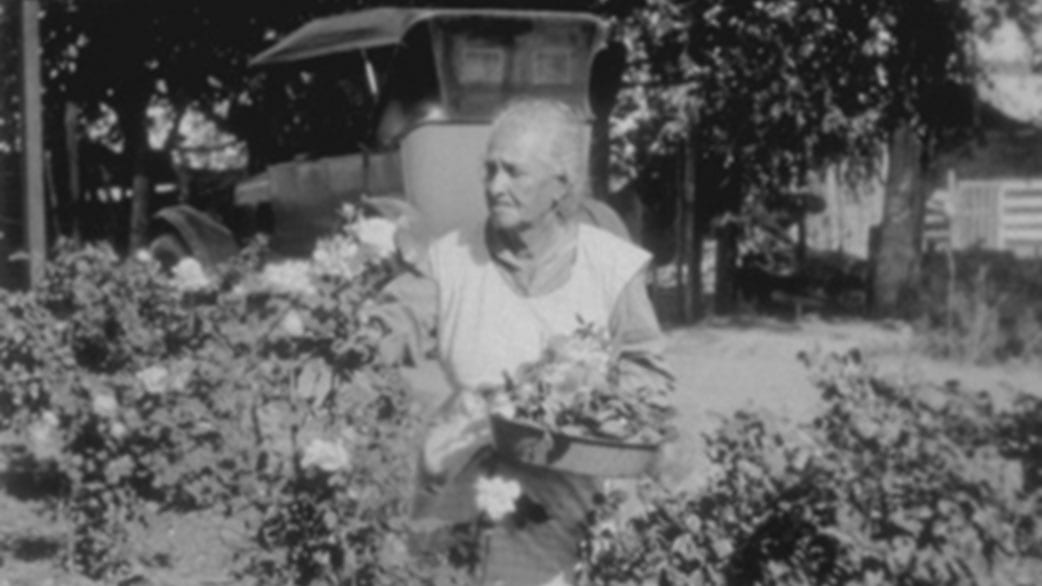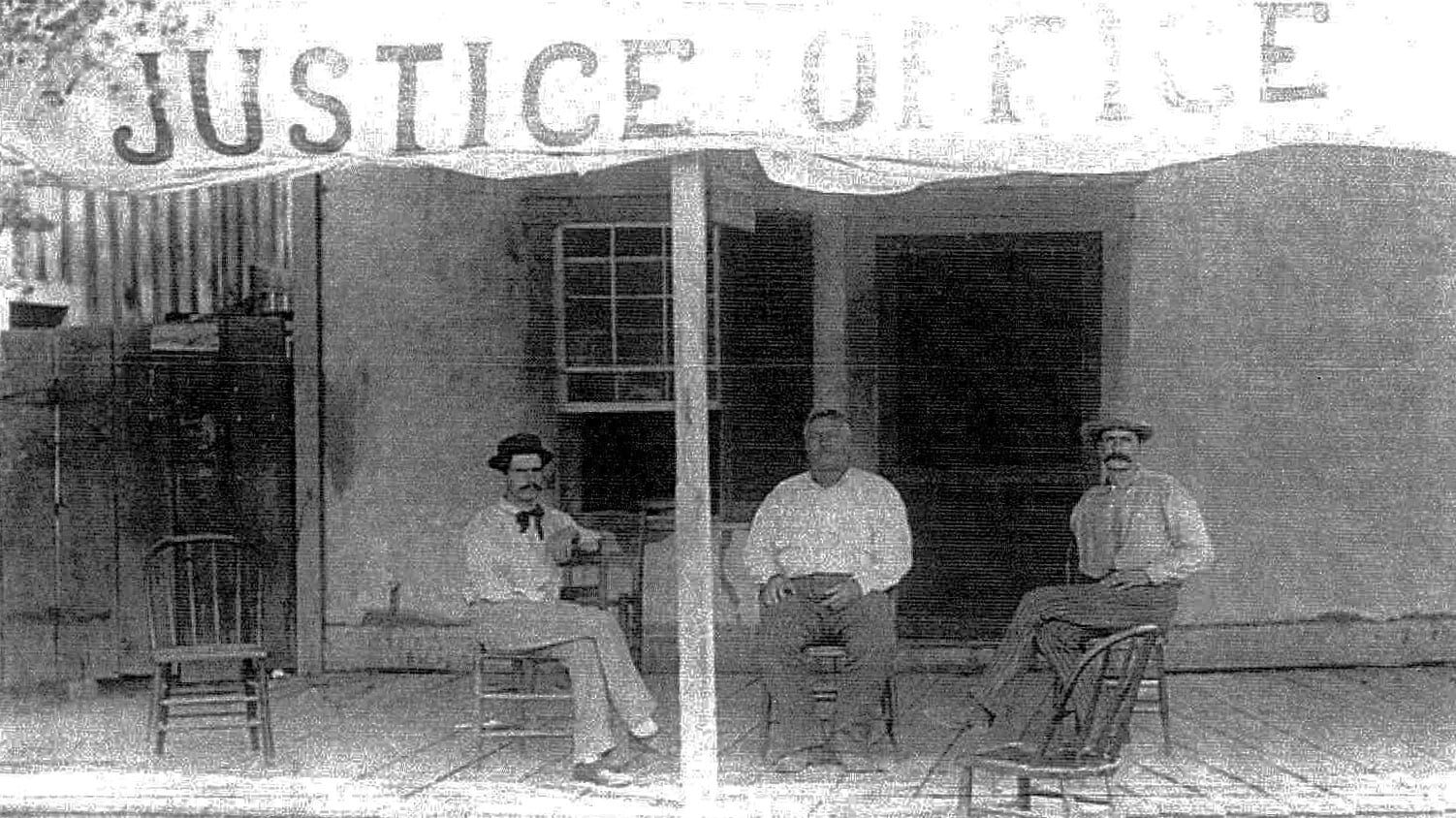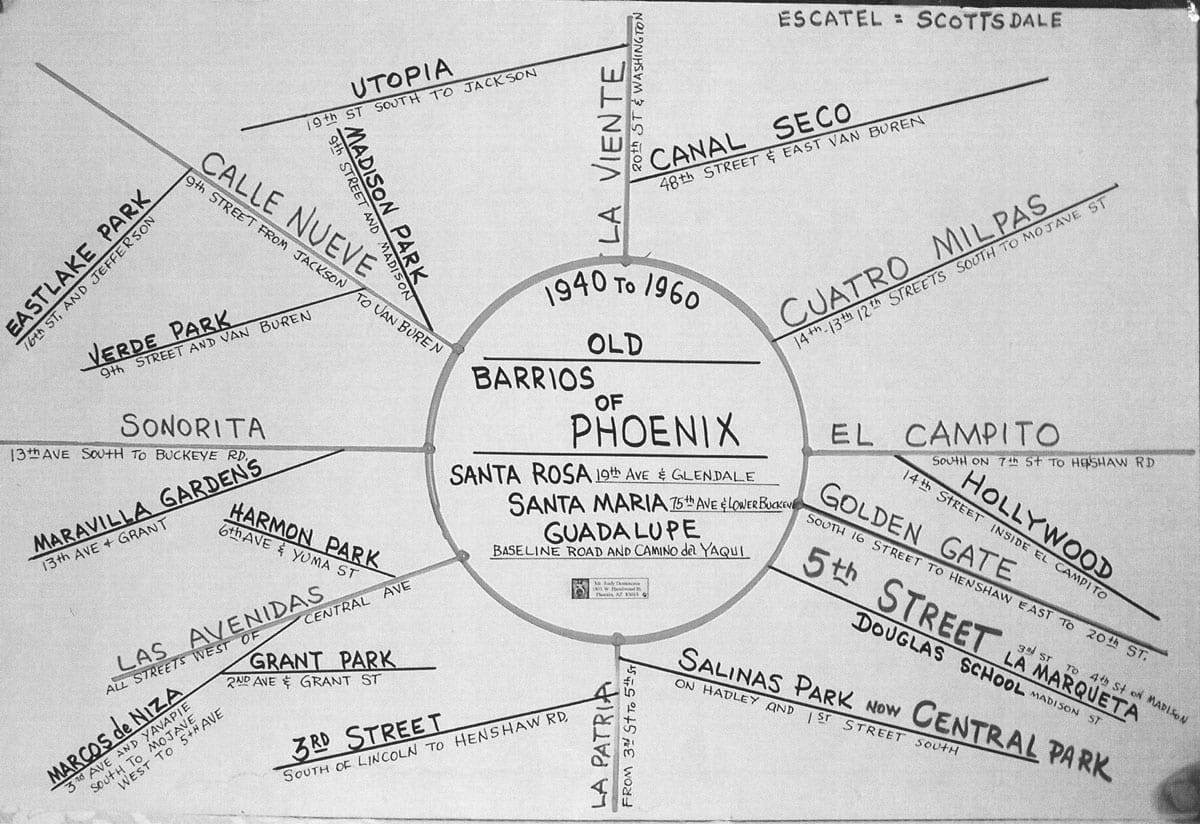
Phoenix pioneer and wife of Jack Swilling, the founder of Phoenix, Trinidad Escalante Swilling works in her Garden in 1925. (Photo: Arizona Science Center)
In my book “Mexicans of Phoenix,” I describe the history of the Mexican community living in Phoenix, summarizing their lives from the beginning of Phoenix in 1868 to the present. Formerly part of Northern Mexico, it is interesting to note that Phoenix was never a city of Mexico.
It was founded 20 years after the war with Mexico, and the subsequent U.S. annexation of the area that today we call Phoenix. Many of the founders were veterans of U.S. wars and ethnic immigrants, all of them searching for a better life.
In the earliest years, about half the population were Mexican citizens and Mexican-Americans, and prior to the 20th century, had fairly compatible relations with the non-Hispanic community – not perfect but compatible.
Phoenix’s Early Hispanic Leaders
Several individuals of Mexican descent were prominent citizens of early Phoenix, and could be considered community leaders. Jesus Otero was a successful merchant and one of the richest men in Phoenix. Miquel Peralta ran the largest retail store in Phoenix, located at Central and Washington streets. He also unsuccessfully ran for Maricopa County Treasurer.
However, the most prominent Mexican individual was Enrique Garfias (1849-1896), popularly elected three times as constable and elected five times as town marshal. His life reads like the adventures of Wyatt Earp, and yet little was known about his exceptional career until recently. In 2017, Jeffrey Richardson wrote a book about Garfias’ life called “Dogged Pursuit,” which outlines his even-handed approach to law enforcement during the days of the Wild West.

Left to right, Enrique Garfias, Hiram McDonald and Billy Blankenship sit in front of the justice office (1880s), located at 200 E. Washington Street. (Photo: Phoenix Police Museum)
In the early years, there were not many women in Phoenix and many men of all races married women of Mexican descent. Most children of these unions were heavily influenced by their mothers, and were raised in the Mexican culture and spoke both English and Spanish.
The most prominent of these unions was Jack Swilling, one of the city’s founders, and his wife Trinidad Escalante. She was the first non-Native American woman to live in Phoenix, an immigrant born in Hermosillo, Sonora.

Due to housing segregation, most Mexicans lived in “barrios,” the Spanish word for neighborhoods, located south of Downtown Phoenix. (Map: Rudy Domenzain)
Discrimination and Segregation
In 1887, the railroad came to Phoenix, making it easier to reach, and resulting in more individuals and families relocating to Phoenix. As the 20th century moved forward, the Mexican community moved from being a major part of the population to becoming a minority.
Many of the new residents were not familiar with the Mexican culture and practiced discrimination and supported segregation. Life began to change for the Mexican community of Phoenix. Discrimination and “English Only” requirements became more prominent.
In 1914, Pedro De La Llama started “La Liga Protectora Latina” to protect Mexican business rights.
Rising Social Inequities, Fighting For Change
The original St. Mary’s Catholic Church on Fourth and Monroe streets was built in 1881 by the Mexican community, and torn down in 1903. An interim basement church served the community until a new larger Catholic church was completed in 1915, and still stands today as St. Mary’s Basilica.
Soon after construction of the new church, it was announced that all Spanish-language Masses would be in the cellar. The Mexican community of Phoenix was incensed, and demanded at least one Spanish Mass on the main altar. The priest refused, and a major confrontation ensued.
The controversy continued for several years until Immaculate Heart of Mary was built in 1928, described as a church for the Mexican community, and located a few blocks east of St. Mary’s at Washington and Ninth streets.

After forcing Hispanic parishioners to celebrate Mass in the basement of St. Mary’s, local Mexican-American leaders came together to build their own church in 1928 – the Immaculate Heart of Mary. Located just east of downtown at 909 E. Washington Street, it was one of many separate institutions Hispanics would establish. (Photo: Catholic Diocese of Phoenix)
Due to housing segregation, most Mexicans lived in barrios located south of Downtown Phoenix. After WWII, young Mexican Americans returned from war and demanded change. Organizations such as the American Legion Post 41 and the Hispanic Chamber of Commerce began the battle for social and economic equality.
In the ‘60s, you had the creation of Chicanos por la Causa (CPLC) and the Caesar Chavez movement that continued the battle for equal rights.
As we continue into the 21st century, we honor the legacy of the past, and look forward to a brighter future where all of us are part of the American dream.
About the Author: Frank M. Barrios is a historian with deep family roots in Arizona. His entire working career has been in water resource management, including serving on the Central Arizona Project Board of Directors from 2003 to 2006. Since retiring, Mr. Barrios concentrated his efforts on Arizona history and community service, including serving as president of the Phoenix St. Vincent de Paul Board of Directors from 2014 to 2017.





